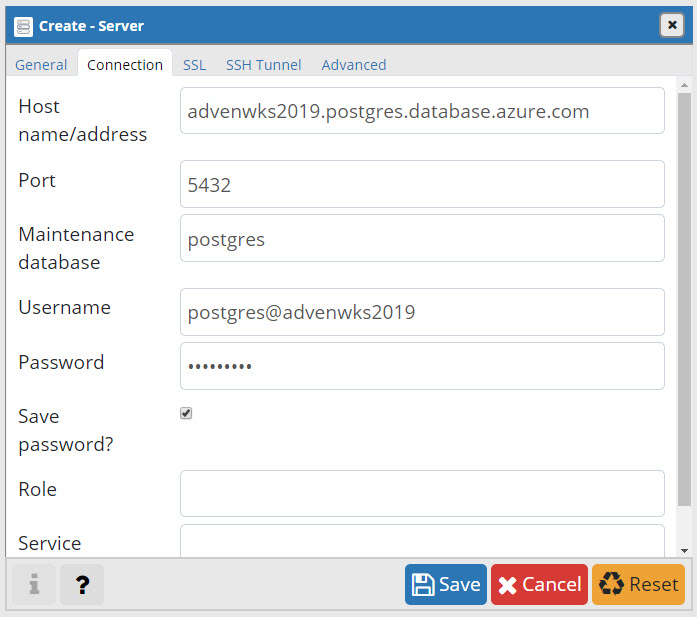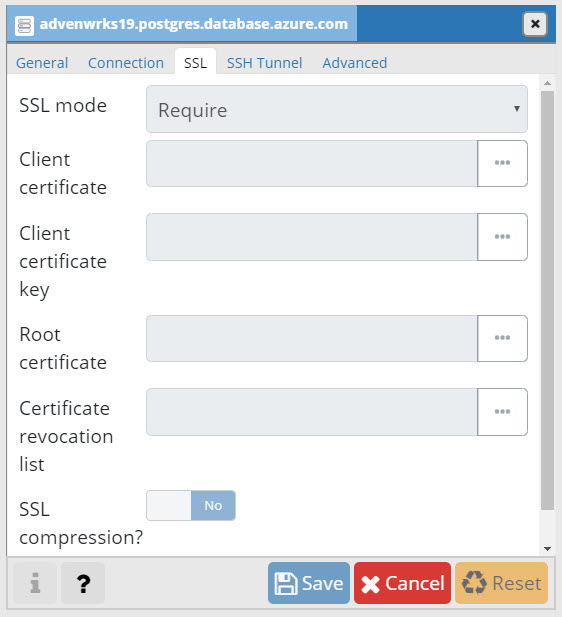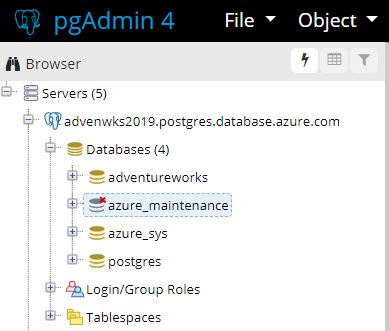Now that we have explored the what, when, why, and how of YAML pipelines, we're going to take a look at transforming your existing scripts into proper Infrastructure-as-Code through a PaaS database scenario. This installment will deploy and configure an Azure Database for PostgreSQL instance, create the AdventureWorks database, and then populate that database with data.
Today, we’ll do all of this using the Azure CLI and native PostgreSQL psql client utility from a bash script. So you can walk through the scenario, we're going to give you the script.
Tomorrow, we’ll convert this scripted deployment into a multi-stage YAML pipeline, demonstrating how you can transform your existing script resources into reliable Infrastructure-as-Code deployments.
While you can run shell scripts on Windows with some work, I am using an Ubuntu 18.04 VM instance I deployed on Windows 10 using the Linux Quick Create wizard in Hyper-V on Windows 10. A shell script, which is how we run Azure CLI, is a bit easier to support on Linux in my opinion.
NOTE: You'll need a service principal to drive the deployment in this installment. Instructions for this are in Day 4 (Linux) and Day 6 (Windows) of the 100 Days of IaC series.
In this installment:
Installing the PostgreSQL client utilities (psql)
Azure Database for PostgreSQL Script
Script Resource Downloads
Connecting to the Azure DB for PostgreSQL instance
SPONSOR: Need to stop and start your development VMs on a schedule? The Azure Resource Scheduler let's you schedule up to 10 Azure VMs for FREE! Learn more HERE
We’ll need the PostgreSQL 10 client utilities, which includes the psql command line utility we’ll use in our script to populate the database with data. The instructions below only install the PostgreSQL client utilities, not a full database instance!
Ubuntu 16.04 or 18.04
On Ubuntu, you'll run this 1-line command:
sudo apt-get -y install postgresql-client-10Windows 10
On Windows 10, it takes more work. You will need to download the PostgreSQL Enterprise Install and choose the ‘Command line only’ option in the gui-based installation wizard. You can find a download link for PostgreSQL 10.x HERE
The sample script performs the following actions:
- Authenticates to specified Azure sub with a service principal
- Deploys an Azure DB for PostgreSQL server instance
- Configures server instance with values specified
- Creates the AdventureWorks database
- Populates the database (thanks to Tonint!)
WARNING: So we can demonstrate connecting to the database instance, this sample creates a firewall rule that opens this instance to the Internet! Make sure to tweak the IP address range in section 3 of the script for your environment.
SYNTAX
./createpostgres.sh \
-i {AZURE_SUBSCRIPTION_ID} \
-t {AZURE_SUBSCRIPTION_TENANT_ID} \
-l {AZURE_LOCATION} \
-r {POSTGRES_RG} \
-u {MGMT_SP_USERNAME} \
-p {MGMT_SP_PASSWORD} \
-d {DB_USERNAME} \
-x {DB_PASSWORD} \
-c {ENV_PREFIX} \
-v {POSTGRES_VERSION} \
-k {SKU_NAME} \
-b {BACKUP_RET} \
-y {GEO_BACKUP}EXAMPLE
Get the example from the syntax help area in the script!
FULL SCRIPT
#!/bin/bash
#########################################################################################################
#
# Name: Azure DB for PostgreSQL - AdventureWorks
#
# Description: This script is responsible for deploying and configuring an Azure Database for PostgreSQL
# instance. Then, the script creates and populates the AdventureWorks database from
# from the command line with the native psql utility.
#
#########################################################################################################
# Parse Script Parameters.
while getopts ":i:t:l:r:u:p:d:x:c:v:k:b:y:" opt; do
case "${opt}" in
i) # Azure Subscription ID.
AZURE_SUBSCRIPTION_ID=${OPTARG}
;;
t) # Azure Subscription Tenant ID.
AZURE_SUBSCRIPTION_TENANT_ID=${OPTARG}
;;
l) # Azure Location.
AZURE_LOCATION=${OPTARG}
;;
r) # The Resource Group name for the File Share & related resources.
POSTGRES_RG=${OPTARG}
;;
u) # Service Principal Username, used for deployment in Azure.
MGMT_SP_USERNAME=${OPTARG}
;;
p) # Service Principal Password, used for deployment in Azure.
MGMT_SP_PASSWORD=${OPTARG}
;;
d) # Postgres Admin Username that will be created for this instance
DB_USERNAME=${OPTARG}
;;
x) # Postgres Password. Note this must meet Microsoft's complexity requirements for this service.
DB_PASSWORD=${OPTARG}
;;
c) # The name for the Azure DB for PostgreSQL server instance.
SVR_NAME=${OPTARG}
;;
v) # Major and minor PostgreSQL version number.
POSTGRES_VERSION=${OPTARG}
;;
k) # Azure DB for Postgres SKU.
SKU_NAME=${OPTARG}
;;
b) # Data backup retention (from 7-35 days)
BACKUP_RET=${OPTARG}
;;
y) # Enables or disable geo-redundancy
GEO_BACKUP=${OPTARG}
;;
\?) # Unrecognised option - show help.
echo -e \\n"Option [-${BOLD}$OPTARG${NORM}] is not allowed. All Valid Options are listed below:"
echo -e "-i AZURE_SUBSCRIPTION_ID - The Azure Subscription ID."
echo -e "-t AZURE_SUBSCRIPTION_TENANT_ID - The Azure Subscription Tenant ID."
echo -e "-l AZURE_LOCATION - The Azure Location where instance will be deployed."
echo -e "-r POSTGRES_RG - Resource group name for Azure DB for PostgreSQL instance."
echo -e "-u MGMT_SP_USERNAME - Management Service Principal Username."
echo -e "-p MGMT_SP_PASSWORD - Management Service Principal Password."
echo -e "-d DB_USERNAME - Postgres Username."
echo -e "-x DB_PASSWORD - Postgres Password."
echo -e "-c SVR_NAME - The naming prefix for associated environment."
echo -e "-v POSTGRES_VERSION - Postgres version nubmer to deploy."
echo -e "-k SKU_NAME - Azure DB for Postgres SKU."
echo -e "-b BACKUP_RET - Backup data retention (in days)."
echo -e "-y GEO_BACKUP - Enable or disable geo backup of postgres data."
echo -e "Script Syntax is shown below:"
echo -e "./createpostgres.sh -i {AZURE_SUBSCRIPTION_ID} -t {AZURE_SUBSCRIPTION_TENANT_ID} -l {AZURE_LOCATION} -r {POSTGRES_RG} -u {MGMT_SP_USERNAME} -p {MGMT_SP_PASSWORD} -d {DB_USERNAME} -x {DB_PASSWORD} -c {SVR_NAME} -v {POSTGRES_VERSION} -k {SKU_NAME} -b {BACKUP_RET} -y {GEO_BACKUP}"
echo -e "An Example of how to use this script is shown below:"
echo -e "./createpostgres.sh -i 0b62f50c-c15a-40e2-b1ab-7ac2596a1385 -t cf5b57b5-3bce-46f1-82b0-396341247726 -l eastus -r advwks-rg -u iac-sp -p '053c7e32-a074-4fea-a8fb-169883esdfwer' -d postgres -x 'MyP@ssw0rd!' -c advenwrks19 -v 9.6 -k GP_Gen5_2 -b 7 -y Disabled \\n"
exit 2
;;
esac
done
shift $((OPTIND-1))
# Logging in to Azure as the Management Service Principal.
/usr/bin/az login \
--service-principal \
-u "http:https://$MGMT_SP_USERNAME" \
-p $MGMT_SP_PASSWORD \
--tenant $AZURE_SUBSCRIPTION_TENANT_ID
if [ $? -eq 0 ]; then
echo "[$(date -u)][---success---] Logged into Azure as the Service Principal [$MGMT_SP_USERNAME]."
else
echo "[$(date -u)][---fail---] Failed to login to Azure as the Service Principal [$MGMT_SP_USERNAME]."
exit 2
fi
# Setting the Azure Subscription to work with.
/usr/bin/az account set -s $AZURE_SUBSCRIPTION_ID > /dev/null 2>&0
if [ $? -eq 0 ]; then
echo "[$(date -u)][---success---] Azure CLI set to Azure Subscription [$AZURE_SUBSCRIPTION_ID]."
else
echo "[$(date -u)][---fail---] Failed to set Azure CLI to Azure Subscription [$AZURE_SUBSCRIPTION_ID]."
exit 2
fi
###################################
# Step 1: Create the Resource Group
###################################
/usr/bin/az group show \
--resource-group $POSTGRES_RG \
--subscription $AZURE_SUBSCRIPTION_ID > /dev/null 2>&0
if [ $? -eq 0 ]; then
echo "[$(date -u)][---info---] Resource Group [$POSTGRES_RG] already exists."
else
echo "[$(date -u)][---info---] Resource Group [$POSTGRES_RG] not found."
# Create a resource group
# az group create --name $POSTGRES_FILE_RG --location $AZURE_LOCATION > /dev/null 2>&0
az group create \
--name $POSTGRES_RG \
--location $AZURE_LOCATION > /dev/null 2>&0
if [ $? -eq 0 ]; then
echo "[$(date -u)][---success---] Created the Resource Group [$POSTGRES_RG] for the Postgres instance."
else
echo "[$(date -u)][---fail---] Failed to create the Resource Group [$POSTGRES_RG] for the Postgres instance."
exit 2
fi
fi
###################################
# Step 2: Deploy the Postgres Server
###################################
az postgres server create \
--location $AZURE_LOCATION \
--name "$SVR_NAME" \
--version "$MAJOR_VERSION" \
--sku-name "$SKU_NAME" \
--admin-user "$DB_USERNAME" \
--admin-password "$DB_PASSWORD" \
--resource-group "$POSTGRES_RG" \
--backup-retention "$BACKUP_RET" \
--geo-redundant-backup "$GEO_BACKUP" \
--storage-size 51200 > /dev/null 2>&0
#############################################
# 3 Configure a firewall rule for the server
#############################################
# The ip address range that you want to allow to access your server
az postgres server firewall-rule create \
--resource-group "$POSTGRES_RG" \
--server "$SVR_NAME" \
--name AllowIps \
--start-ip-address 0.0.0.0 \
--end-ip-address 255.255.255.255 > /dev/null 2>&0
#############################################
# 4 Create the Adventureworks database
#############################################
# create the database
az postgres db create \
-s "$SVR_NAME" \
-g "$POSTGRES_RG" \
-n adventureworks
############################################################
# Populate the database(s) [assumes .sql files are present]
############################################################
# populate the database (while avoiding the password prompt)
PGPASSWORD=$DB_PASSWORD psql \
-v sslmode=true \
-d adventureworks \
-h ${SVR_NAME}.postgres.database.azure.com \
-U postgres@${SVR_NAME} \
-a \
-f install.sql
Get createpostgres.sh and install.sql from the \resources folder and store in the same directory in your environment. Better yet, just clone this repo!
To connect to your Azure DB for PostgreSQL server instance, download pgAdmin 4
Configure your server connection with the name of your server, username in username@server format, along with the password, as shown in Figure 1.
Figure 1. Server and user settings in pgAdmin
Make sure to enable SSL (Figure 2), as we enabled this in the deployment script.
Figure 2. SSL setting in pgAdmin
Then, save and connect!
Figure 3. Azure DB for PostgreSQL connection in pgAdmin
In this installment, we've demonstrated deployment and configuration of a PaaS service instance all from a shell script using Azure CLI and native tools. In the next installment, we'll transform this into a manageable, multi-stage Infrastructure-as-Code deployment in Azure Pipelines!


